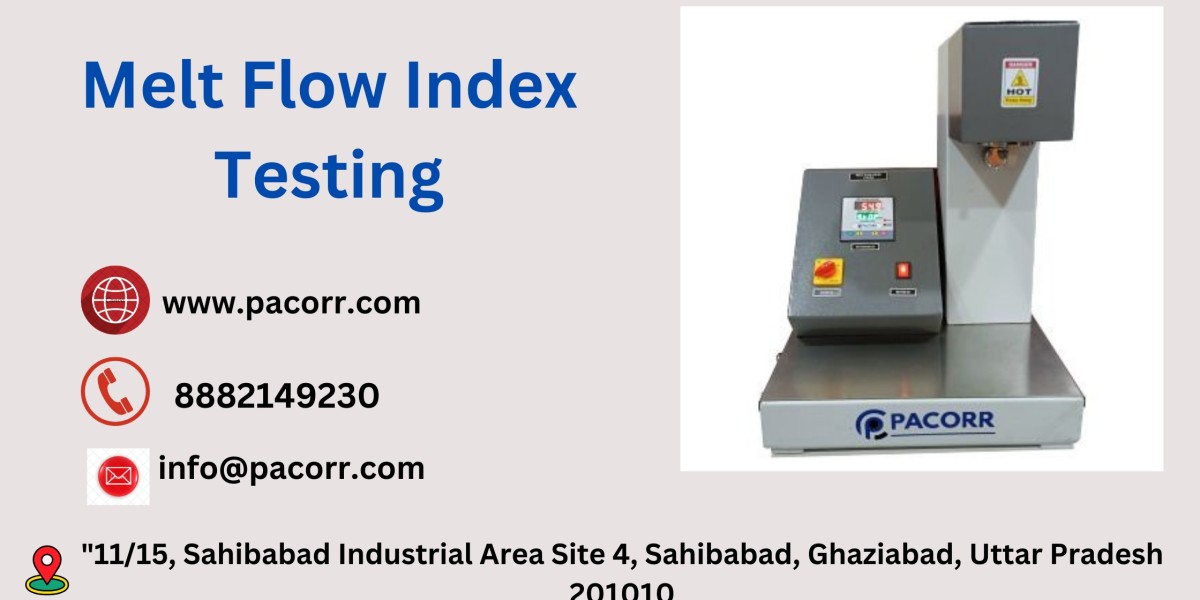Introduction
In the realm of polymer processing and manufacturing, understanding the flow properties of plastic materials is crucial. The Melt Flow Index (MFI) Tester, also known as the Melt Flow Rate (MFR) Tester, is an essential tool for evaluating these properties. This article explores the importance, applications, features, and benefits of the Melt Flow Index Tester, highlighting its role in ensuring the quality and consistency of plastic materials.
What is a Melt Flow Index Tester?
A Melt Flow Index Tester measures the rate at which a thermoplastic polymer melts and flows under a specified load and temperature. This test provides valuable insights into the material's viscosity, flow characteristics, and molecular structure, which are critical for determining its suitability for various applications.
Importance of Melt Flow Index Testing
- Quality Control: Ensuring the consistency and quality of plastic materials across production batches.
- Material Selection: Helping manufacturers select the appropriate material for specific applications based on its flow properties.
- Process Optimization: Assisting in optimizing processing conditions such as temperature and pressure for manufacturing processes.
- Regulatory Compliance: Ensuring materials meet industry standards and regulatory requirements for performance and safety.
- Product Development: Aiding in the development of new polymer formulations with desired properties.
Applications of the Melt Flow Index Tester
- Plastic Manufacturing: Assessing the flow properties of raw materials to ensure they meet production specifications.
- Quality Assurance: Regular testing of products to maintain consistent quality and performance.
- Research and Development: Analyzing new polymer formulations and modifications to existing materials.
- Injection Molding and Extrusion: Optimizing processing conditions to improve product quality and reduce defects.
- Recycling: Evaluating the flow properties of recycled materials to ensure they can be effectively reused.
Key Features of the Melt Flow Index Teste
- Precision Temperature Control: Ensures accurate and consistent test conditions, providing reliable results.
- Automated Testing: Modern testers feature automated systems for loading, testing, and data recording, enhancing efficiency and reducing human error.
- Digital Display: Provides real-time readings of melt flow rate and other critical parameters, facilitating easy monitoring and analysis.
- Versatility: Capable of testing a wide range of thermoplastic materials, making it suitable for various applications.
- Data Logging and Analysis: Advanced models offer data logging capabilities for detailed analysis and record-keeping.
How to Use a Melt Flow Index Tester
- Preparation: Preheat the tester to the specified temperature and prepare the sample material.
- Loading: Place the sample in the test chamber and apply the specified load.
- Testing: The material is heated and flows through a die under the applied load. The rate of flow is measured over a set period.
- Analysis: The melt flow rate is calculated and analyzed to determine the material's flow properties.
Advantages of Using a Melt Flow Index Tester
- Accuracy: Provides precise measurements of melt flow rate, ensuring reliable data for quality control and material selection.
- Efficiency: Automated features and digital controls streamline the testing process, saving time and labor.
- Versatility: Suitable for testing a broad spectrum of thermoplastic materials, from standard polymers to specialized formulations.
- Compliance: Helps ensure materials meet industry standards and regulatory requirements, enhancing product safety and performance.
Choosing the Right Melt Flow Index Tester
When selecting a Melt Flow Index Tester, consider the following factors:
- Temperature Range: Ensure the tester can operate within the required temperature range for your materials.
- Load Range: Verify that the tester can apply the necessary loads for your specific tests.
- Ease of Use: Look for user-friendly interfaces and automated features that simplify the testing process.
- Accuracy and Precision: Choose a tester with high accuracy and precision to ensure reliable results.
- Support and Service: Consider the availability of technical support and after-sales service from the manufacturer.
Conclusion
The Melt Flow Index Tester is an invaluable tool for the polymer industry, providing critical data on the flow properties of thermoplastic materials. By ensuring consistent quality, optimizing processing conditions, and aiding in material selection and development, it plays a vital role in enhancing the performance and reliability of plastic products. For manufacturers looking to maintain high standards and meet industry requirements, investing in a high-quality Melt Flow Index Tester from a reputable provider like Pacorr Testing Instruments is essential.
For more information on the Melt Flow Index Testing and to explore the range of testing instruments available, visit Pacorr Testing Instruments.








